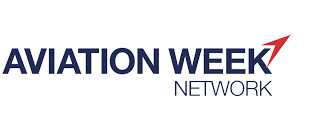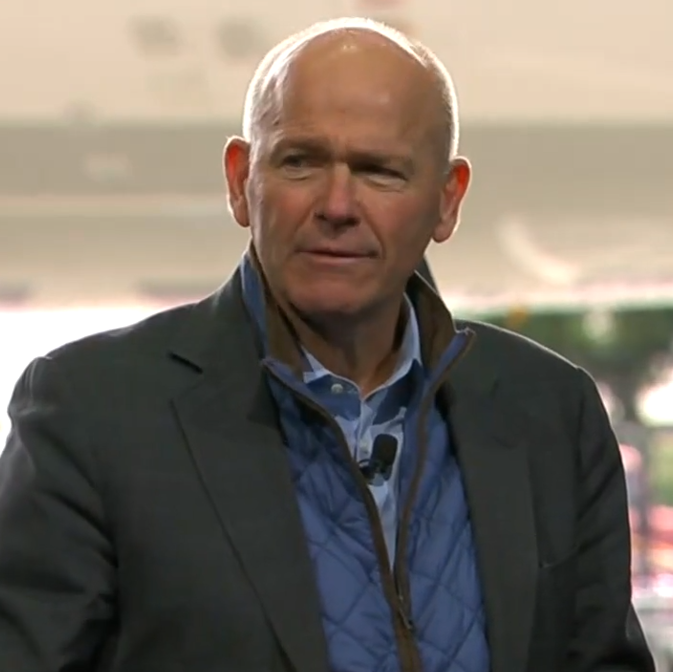By Scott Hamilton
Analysis
Special Coverage of the Boeing Crisis
Jan. 26, 2024, © Leeham News: At the first commercial aviation conference following the Alaska Airlines Flight 1282 Boeing 737-9 accident on Jan. 5, much of the conversation was about the fallout to Boeing. Spirit AeroSystems was a topic of less conversation, even though the problem with 1282’s door plug appears to have originated with Spirit.
 Aviation Week’s supplier conference was supposed to begin with a fireside chat with Boeing’s Ihssane Mounir, the head of Boeing’s commercial supply chain. Unsurprisingly, Mounir canceled the week before as the Alaska accident—in which there were no fatalities and only a few minor injuries—expanded into a full-blown crisis for Boeing.
Aviation Week’s supplier conference was supposed to begin with a fireside chat with Boeing’s Ihssane Mounir, the head of Boeing’s commercial supply chain. Unsurprisingly, Mounir canceled the week before as the Alaska accident—in which there were no fatalities and only a few minor injuries—expanded into a full-blown crisis for Boeing.
News that the Federal Aviation Administration dropped the hammer on Boeing by freezing current 737 production rates and killing, for now, expansion of the airplane’s final assembly to the “North Line” in Everett (WA) brought disbelief that Boeing has fallen so far from what was once considered the Gold Standard of American engineering.
And, with contract negotiations beginning in March with its touch-labor union, the IAM 751, aerospace analyst Ron Epstein of Bank of America predicted that 751 has more leverage now than in recent years and Boeing will be in the weaker bargaining position.

David Calhoun, CEO of The Boeing Co.
Other than consultant Richard Aboulafia, a vociferous critic of Boeing CEO David Calhoun, speakers were willing to definitively call for changes in Boeing’s leadership. But in sideline talk, consensus was clear: “leadership” at Boeing headquarters and in Seattle with Commercial Airplanes has to go.
But there was no agreement, or even suggestions, about who should replace Calhoun and Stan Deal, the CEO of Commercial Airplanes.
Deep shake up needed
Consensus is that Boeing’s decline has been decades in the making—and has its roots in the 1997 merger with McDonnell Douglas Corp. nearly 27 years ago. The shift from engineering and quality to shareholder value began with this merger and continued with CEOs and members of the Board of Directors with antecedents to GE Corp. and the Jack Welch emphasis on stock buybacks and dividends.
Boeing’s two leading unions, SPEEA (engineers and technicians) and the IAM 751, warned repeatedly that safety was being compromised. Although management repeatedly denied the claims, evidence over the years in the form of quality control issues on the production lines and before delivery to customers suggested otherwise. The multiple investigations into the Lion Air and Ethiopian Airlines MAX crashes in October 2018 and March 2019 revealed alarming safety shortcuts and miscalculations that led to these crashes.
A deep shake up at Boeing is needed, people at the conference said on the sidelines. And this has to go deeper than Calhoun and Deal. Changes need to be made to those overseeing safety and program managers.
First Safety Committee named
In September 2019, then-CEO Dennis Muilenburg appointed a Board-level committee to review safety processes. The objectives:
– Create a Product and Services Safety organization: The board recommends that a new Product and Services Safety organization be created and report directly to senior company leadership and the board’s Aerospace Safety Committee. The organization’s responsibilities would include reviewing all aspects of product safety, including investigating cases of undue pressure and anonymous product and service safety concerns raised by employees. The organization also would maintain oversight of the company’s Accident Investigation Team and the company’s safety review boards. The committee believes the work of this organization should increase awareness and reporting of, and accountability for, safety issues within the company, further improving enterprise-wide product and services safety.
It is recommended that the enterprise Organization Designation Authorization, the company’s engineering and technical experts who represent the Federal Aviation Administration in airplane certification activities, report to the Product and Services Safety organization and vice president for Product and Services Safety.
The board further recommends that the Accident Investigation Team as well as the teams responsible for military aircraft certification and mission assurance for space and launch systems report to the vice president for Product and Services Safety.
— Realign the Engineering function: The board recommends that engineers throughout Boeing, including the new Product and Services Safety organization, report directly to the chief engineer, who in turn reports directly to the company’s chief executive officer. The company’s chief engineer should focus his or her attention primarily on the Engineering function and the related needs of the company, supported by a senior leader who is responsible for developing, implementing and integrating new technology, tools, processes and digital systems. The board believes the recommended realignment would strengthen the company’s Engineering function, promote continued companywide focus on customer, business unit and operational priorities, and result in an even greater emphasis on safety.
— Establish a Design Requirements Program: The board recommends that the realigned Engineering function create a formal Design Requirements Program that would incorporate historical design materials, data and information, best practices, lessons learned and detailed after-action reports. The board believes this will reinforce Boeing’s commitment to continuous improvement and a culture of learning and innovation.
— Enhance the Continued Operation Safety Program: The board recommends that the company amend its Continued Operation Safety Program to require all safety and potential safety reports be provided to the chief engineer for his or her review. This requirement would increase transparency and ensure safety reports from all levels of the company are reviewed by senior management.
— Re-examine flight deck design and operation: The board recommends that Boeing partner with its airline customers and others in the industry to re-examine assumptions around flight deck design and operation. Design assumptions have evolved over time, and the company should ensure flight deck designs continue to anticipate the needs of the changing demographics and future pilot populations. Additionally, the company should work with all aviation stakeholders to advise and recommend general pilot training, methods and curricula – where warranted, above and beyond those recommended in a traditional training program – for all commercial aircraft manufactured by the company.
— Expand the role and reach of the Safety Promotion Center: The board recommends that the Safety Promotion Center’s role and reach be extended beyond Boeing’s engineering and manufacturing communities to the company’s global network of employees, factories, facilities and offices. This expansion would serve to reinforce Boeing’s longstanding safety culture and remind employees and the flying public of the company’s unyielding commitment to safety, quality and integrity.
Boeing never publicly revealed the success of this initiative (as far as LNA knows). In light of the current MAX crisis, it appears that Boeing fell short of a shift in its safety culture.
Second Safety Committee Named
On Jan. 16, Calhoun appointed yet another committee to review safety. The committee members have not been identified.
- A team of outside experts will conduct a thorough assessment of Boeing’s quality management system for commercial airplanes, including quality programs and practices in Boeing manufacturing facilities and its oversight of commercial supplier quality. His recommendations will be provided to Calhoun and to the Aerospace Safety Committee of Boeing’s Board of Directors.
The FAA on Jan. 5, 2023—exactly one year before Alaska 1282 occurred—appointed a committee to review Boeing’s safety. The committee included MIT, airlines and other outside experts. The draft of this report is due in a few weeks. LNA has been told it will not be favorable to Boeing.
Safety Stand Down
Yesterday, Boeing had a one-day safety stand down at its 737 plant to review and emphasize safety procedures. Boeing issued a statement yesterday. Given the importance of the issues at hand, the substance of the press release is reprinted in its entirety.
Overview
- On a normal work day, our factory teams meet at the start of every 8-hour shift to discuss work plans and raise and resolve questions. By contrast, Boeing holds a “stand down” periodically to address serious issues. FYI a stand down is a common practice in heavy manufacturing.
- This was the first time the company has paused airplane production for an entire day with a stand down to focus on quality. Boeing has held stand downs previously focused on worker safety.
Today’s Quality Stand Down in the 737 factory on Thursday, January 25
- The entire factory paused 737 production for 15 hours through the first and second shifts. A total of more than 10,000 employees took part.
- The first shift stand down started at 6:30 AM PT; the second shift stand down started at 2:30 PM PT. The third shift, which is overnight, plans a stand down next week.
- In each shift, the quality stand down opened with production leaders reflecting on recent 737-9 issues and asking teammates to speak up about any concerns. In addition, leaders asked employees to identify ways to improve safety, compliance and first-time quality.
- Next, employees across the 737 program – including mechanics, quality inspectors, engineers and others – gathered in small teams and visually inspected work areas to identify improvements. They discussed how they could work as a team to improve first-time quality, safety and compliance. Each team is creating an improvement and action plan.
- In coming weeks, other Commercial Airplane factories and fabrication sites (Boeing factories that produce airplane parts and assemblies) will hold quality stand downs, including at our widebody factories in Everett, Wash., and North Charleston, South Carolina.
Related

